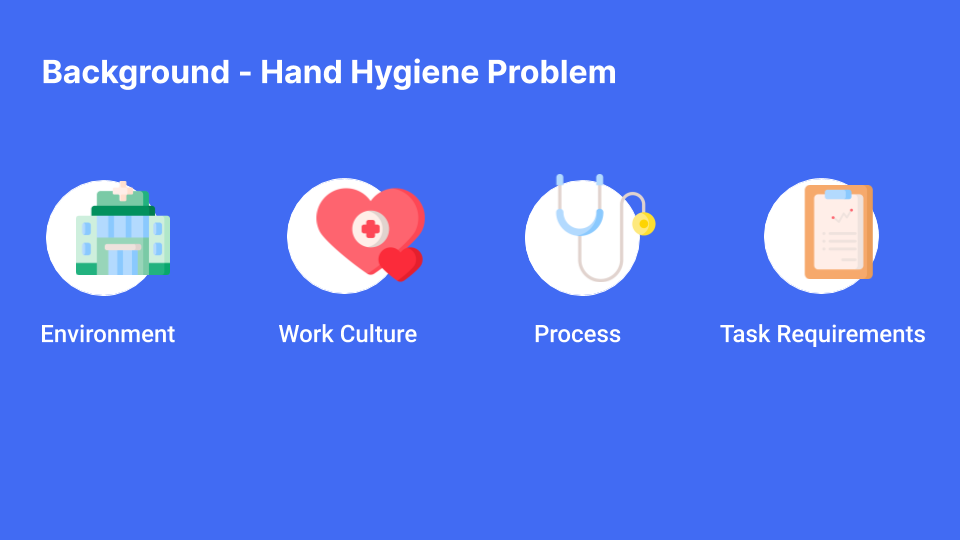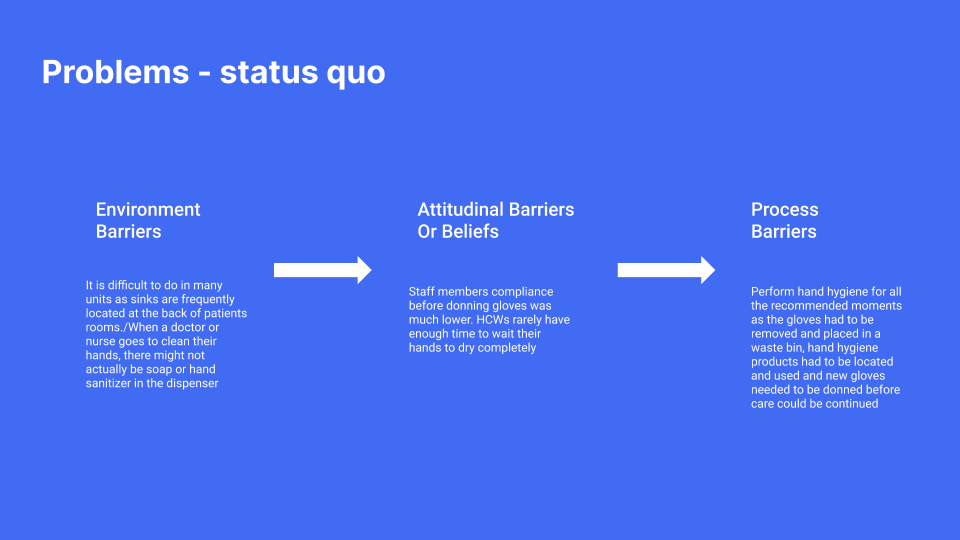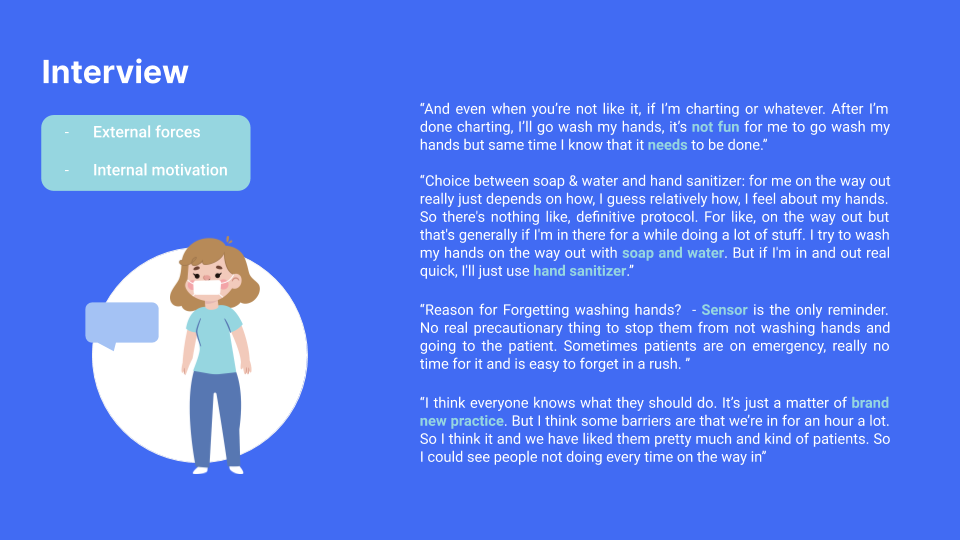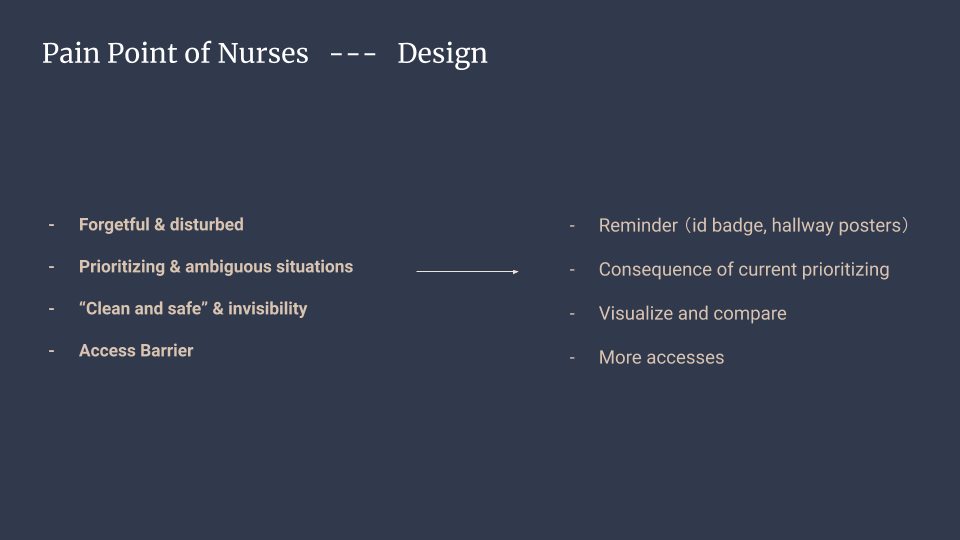
Background:
Hospital infections affect almost two million people in the United States every year, 100, 000 of whom die. Up to 70 percent of these infections could be prevented if health care workers follow recommended protocols, which include hand hygiene. Throughout healthcare, the physical environment represents an important source of pathogens that can cause infections or carry antibiotic resistance. Hand hygiene compliance by healthcare providers has been difficult to achieve due to diverse environments, work culture, processes and task requirements.
Compliance is a challenge, however. While it is well known that proper hand hygiene practices are the most effective method of reducing hospital-acquired infections (HAIs), the rate with which HCWs comply with best practice recommendations is still only approximately 78%.
Healthcare system encourage HCW to adhere to the “four moments of hand hygiene”
- Before initial contact with a patient or patient’s environment
- Before performing an aseptic procedure
- After the risk of body fluid exposure
- After contact with a patient or patient’s environment

Problems:
- Environmental Barriers
- When exiting isolation rooms, HCWs remove personal protective equipment. Once their equipment is removed, they are expected to perform hand hygiene. This is difficult to do in many units as sinks are frequently located at the back of patients rooms. / When a doctor or nurse goes to clean their hands, there might not actually be soap or hand sanitizer in the dispenser.
- Attitudinal Barriers or Beliefs
- Staff members were usually compliant with performing hand hygiene after glove removal. However, their compliance before donning gloves was much lower. HCWs rarely have enough time to wait their hands to dry completely.
- Process Barriers
- A policy requiring that gloves be worn made it tedious to perform hand hygiene for all the recommended moments as the gloves had to be removed and placed in a waste bin, hand hygiene products had to be located and used and new gloves needed to be donned before care could be continued. Many staff members were unable to comply with the recommended guidelines because of the additional time it required to complete this process.

Interviews:
We interviewed 5 nurses at AHN hospital.

Insights:
- Three types of barriers identified were much related. Environment barriers often reinforce attitudinal and process barriers.
- One invisible germs can multiply into more than 8 million germs in one day. HCWs think they have enough protection against invisible germs
- The 30-second process of the nurse washing hands in the ward is an important moment. This is an opportunity to help nurses have a deeper understanding of patients and increase patient trust in nurses
How to perform hand hygiene:
- Alcohol-based hand sanitizer
- Wash with soap and water
Behavioral explanation: why HCWs don’t wash their hands(motivation)
- Inherent handwashing-attitude, peer behavior and emotionally dirty
- Elective handwashing-beliefs in the benefits of the activity, peer pressure and administrators
Pain points of Nurses – why nurses do not wash hands when they should have to
- Forgetful & disturbed.
- Nurses are human. They forget about things. Sometimes they are not consciously aware of they are neglecting hand hygiene protocols.
- Ambiguous situations & Prioritizing
- They are some ambiguous situations where nurses are not put hand hygiene in their top priority. For example, if there is a emergent call from patient, the nurses may need to start compression immediately, and thus leaves little time and little attention for hand hygiene.
- Invisibility & “clan and safe”
- Virus, bacteria, and germs are invisible. If we could see how many virus we have on hands, I believe every nurse would wash their hands they knew it is not clean. Because of the invisibility, nurses have the assumption that their hands are clean and it is safe to interact with patients. It is because the virus are invisible, therefore it is the best to practice hand hygiene protocols strictly.
- Access barrier
- For example, there are no hand rub in the water sink. Sometimes the nurses hands are full.


